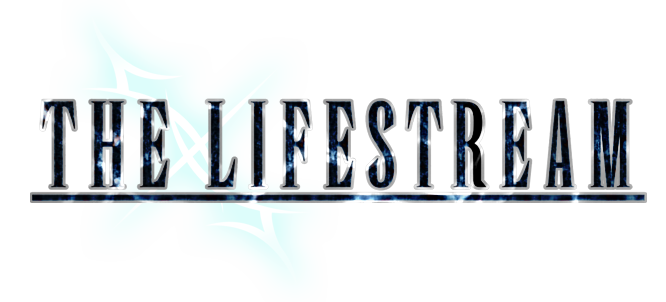Story time!Though I do suspect @Shademp will hate this part:
“I’ve heard that there’s a church in the Sector 5 Slums. In the past, people gathered here and prayed to God, but nobody comes here anymore. I’ve been thinking that we should hide here a little…”
“I’ve heard about God! Does he really exist?” Aerith was surprised.
“According to his believers, he does. I heard that when they pray, they get empowered.”
“Pray…?”
“It’s something like us Cetra speaking to the planet, although I don’t really understand it. But, since no one is coming to the church anymore, there probably aren’t any believers. It’s too bad for God, but it seems like it’s great for our situation.”
When the world was young and so were we, over half a decade ago, me and The Twilight Mexican (aka Tres) were collaborating on writing up (and hopefully designing) a fan-made sequel to wrap up the final loose ends left behind by the Compilation of FFVII. The project was overambitious and no game or even a demo came out of it but the creative process was very stimulating and enlightening.
One of the main challenges we faced was making it so that this story, and the theoretical game, would feel like it belonged in the world of FFVII. Any element that lacked precedence in FFVII canon, be it dialogue breaking new ground or a gameplay mechanic that is rare or even unseen in the Final Fantasy franchise, ran the risk of taking the player out of the story and reminding them that this was "merely" a fanfic. In this sense our creative hands were tied in more ways than it is for the official writers and game designers working for Square.
Thusly, each element that seemed to break new ground or do something that had never before been seen in FFVII had to be super carefully considered and weighed.
I must emphasize that Tres wrote 95% of the scenario material and he is the true genius when it comes to writing FFVII dialogue and making the voices leap out of the page in a way that it feels like the official characters are speaking. My role became that of the "inhibitor" or "limiter", pointing out when I thought the scenarios went too wild, had to be dialed down or replaced by something else entirely. Funny thing is that the longer the project went on, the more frequently our roles became reversed with me being the person suggesting a crazy scenario and then Tres rightfully pointing out "hang on, this doesn't work". It was a wonderful process of back-and-forth, fine-tuning the elements into something we both considered functional.
One such scenario suggested by Tres involved multiple FFVII characters speaking at length about God while they were in a church. The dialogue, as always, was great and tugged at the emotions. Two splinters were acting up in my brain as I read this however.
#1: No FFVII characters has ever spoken ABOUT God and never entered into theological discussion in the way that this scene did.
#2: My own bias towards thinking that it's a big deal to add more detail to the murky, real-life-esque religious elements found within FFVII's aesthetic.
I stood firmly in my position that the theology scene did not have enough precedence in official FFVII canon and that the religious elements (churches, prayers) should remain as only an aesthetic and nothing that the game ever discusses or delves into. I counted every official instance of a character saying "Oh God" or "Oh GAWD!" as expressions that did not reveal the world's lore, but rather showed examples of common real-life phrases bleeding into the FFVII script without actual thought to its MEANING worldbuilding-wise.
Some of these opinions I still retain BUT Trace of Two Pasts has now broken new ground and created a precedence for not just characters speaking about God but SPECIFICALLY linking the churches and prayers in FFVII to a Judeo-Christian type god. It made sense to assume this link before the book came out, yes, but to me it makes a huge difference that now the novel actually adds some specificity and confirmation to what the church in the slums actually is. The church is not SIMPLY an aesthetic borrowed thoughtlessly by a Japanese game development company, it now IS a church devoted to a God that is for all intents and purposes a Judeo-Christian god.
*EDIT: I am remembering now, once again, this scene from Episode Nanaki where a boy says "God has granted him to me." so that is arguably the first instance of the God concept being more solidifed in the world of FFVII. I still think that the new scene between Aerith and Ifalna holds stronger implications lore-wise.*
What do I think about Nojima's choice to enlighten us about the church's true in-universe purpose and history? I actually dig it. No longer do I have to keep myself in this limbo about FFVII canon where I only know of the church as an aesthetic and where I strictly speaking know nothing about its religious lore. Nojima has once again, through the Remake project, fleshed out the world and showed that he has the courage to make decisions about things that were previously only limited to fanfics. I applaud Nojima on this.
Last edited:




